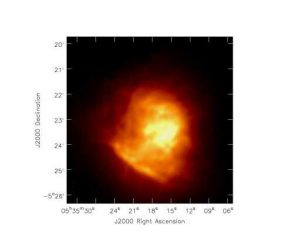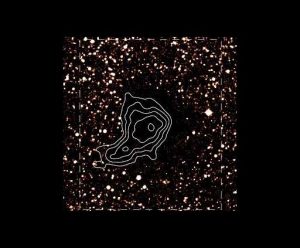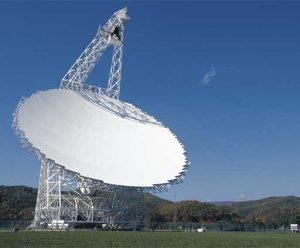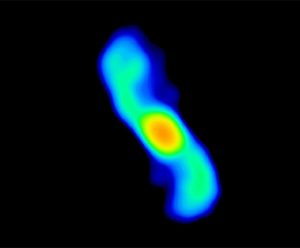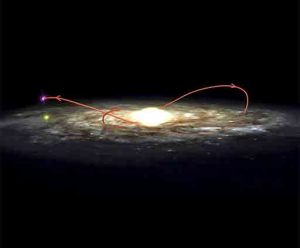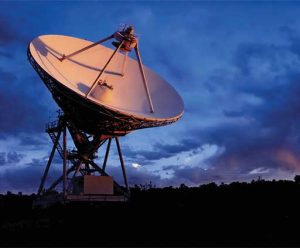Combining the best features of the National Science Foundation’s new Green Bank Telescope in West Virginia with those of the NSF’s Very Large Array in New Mexico, astronomers have produced a vastly improved radio image of the Orion Nebula and developed a valuable new technique for studying star formation and other astrophysical processes.
Stars Need a ‘Kick’ to Get Started
Star formation is a longer process than previously thought, and is heavily dependent on outside events, such as supernova explosions, to trigger it, a team of astronomers has concluded. The scientists reached their conclusions after making a detailed study of a number of the dark gas clouds in which new stars are formed.
Newly Commissioned GBT Bags New Pulsars
Astronomers using the National Science Foundation’s newly commissioned Robert C. Byrd Green Bank Telescope (GBT) have discovered a windfall of three previously undetected millisecond pulsars in a dense cluster of stars in the Milky Way Galaxy.
Star Caught in the Act of Planetary Nebula Formation
A team of astronomers using the National Science Foundation’s Very Large Array radio telescope has caught an old star during the very brief period of its transformation into a planetary nebula, a shining bubble of glowing gas with a hot remnant star at its center.
Ancient Black Hole Speeds Through Galaxy
Astronomers find an ancient black hole speeding through the Sun’s Galactic neighborhood, devouring a small companion star as the pair travels in an eccentric orbit looping to the outer reaches of our Milky Way Galaxy.
Best Detail Ever of Star-forming Cloud’s Magnetic Field
Astronomers have used the National Science Foundation’s Very Long Baseline Array radio telescope to do a very detailed map of the magnetic field within a star-forming cloud.






